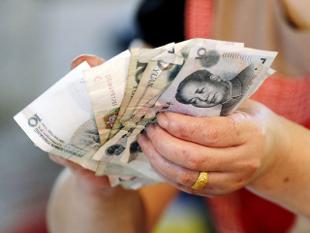In the past years, especially in 2013-14, Foreign Trade hasn't been the strength of the Indian Economy. The worst hit was the merchandise exports, all thanks to the petroleum products, which played spoilsport in this steady downfall. Not just this, a lot of sectors that have been the major contributors to India's total export basket have shown poor performance. These sectors include gems and jewellery, chemicals, engineering goods, electronic goods.
However, not all is gloomy. In fact, the World Economic Outlook published by the IMF and the World Bank forecasts that India's economy may rise to 7.5 percent in 2015 as opposed to 7.2 percent in 2014. Exchange rate dynamics and geopolitical risks will be playing a major role in the same, and hence, it is extremely important for India to exhibit reasonable growth in exports.
Much to the delight of the small scale and medium scale exporters and
stock lot suppliers, the Foreign Trade Policy for the term 2015-2020 is focuses on improving the ease of doing business. In addition, the policy lays down a clear road map for exports for the coming years. Here, the government has particularly laid emphasis on trade facilitation. Its plan of action includes cutting down the time and transaction costs required in exports by moving towards digitization and paperless working in a 24 X 7 environment. This is not all. In an effort to ease the entire process for merchandise and textile suppliers in India, a total of five schemes have been merged into one single scheme namely Merchandise Export from India Scheme. This will not only help to streamline the process for merchandise exports as well as service exports, but will also be more in line with the WTO rules.
Moreover, the new FTP aims at integrating India's export strategy with the flagship 'Make in India' programme. It seeks to promote the indigenous capital goods production by reducing Export Obligation for domestic procurement under EPCG scheme, by almost 15 percent. Also, it is proposed to give a higher level of rewards to products with high domestic content and value addition.
Meanwhile, it has been reported the government is set to reintroduce the interest subvention scheme, which lapsed in April last year, soon for some labour intensive sectors. This will be a welcome change, especially for the suppliers with surplus stock. Even in the earlier terms, this scheme has proved its mettle by being extremely beneficial for the small and medium enterprises engaged in exports. The FTP, therefore, rightly, wants our exporters to get prepared to run on competitive advantage instead of expecting tariff sops to come their way.
While the government is taking steps to bring about more than just a positive change for the Exporters, it is up to the small and medium scale enterprises to step up and work in tandem with the newly introduced schemes to extract the maximum possible benefits.
Article Originally Posted On: Article Base





